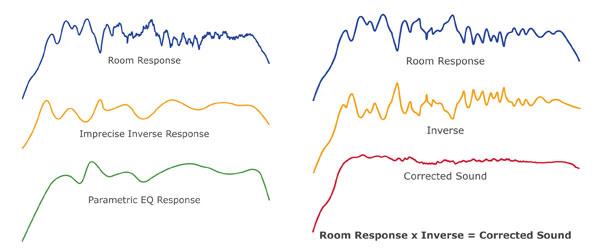Conventional EQ vs Audyssey

Theo Nicolakis
I spoke with Chris Kyriakakis, Audyssey's CTO, about this, and he says there's a huge difference between these systems. Conventional equalizer (EQ) units operate only in the frequency domainthat is, they affect various frequencies and frequency bands. They do nothing in the time domain, in which things like room reflections occur.
By contrast, Audysseyand perhaps other auto-correction algorithms, though I only know how Audyssey works for suremeasures and filters in the time domain using a finite-impulse response (FIR) filter that is applied to the signal in real time. Instead of frequency bands, a FIR filter can have any number of coefficientsthe more coefficients, the better the resolution, but also the more processing power you need. Audyssey's MultEQ, MultEQ XT, and MultEQ XT32 filters have dozens, hundreds, and tens of thousands of coefficients, respectively.
Kyriakakis outlines four major benefits of FIR-based correction:
1. Time-domain measurements provide information about reflections that arrive at different times, which conventional EQs can't.
2. The filters in conventional EQs can introduce phase distortion as you make the bands narrower, whereas FIR filters optimize time (phase) and frequency response without this problem.
3. Conventional EQs have tens of bands that overlap, whereas FIR filters have hundreds to tens of thousands of points that can be used to shape the response.
4. Most conventional EQ boxes can measure the frequency response at only one location, which can actually worsen the sound, whereas Audyssey can measure at several locations.
As you can see on the left in the graph above, a conventional parametric EQ creates only an imprecise inverse to a room's response. On the right, you can see that Audyssey creates a much more precise inverse response because of its many coefficients and time-domain filtering, resulting in a much flatter response in the corrected sound.
If you have an A/V question, please send it to askscottwilkinson@gmail.com.
- Log in or register to post comments























































